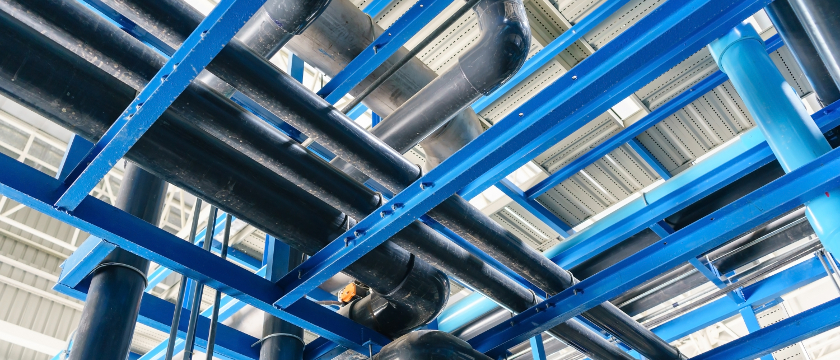
25 Oct. 2018
What’s The Difference Between Copper and Plastic Pipes?
When hiring a local plumber to install plumbing pipes for your home or business, it’s important to understand the different options available to you and that includes the difference between copper and plastic pipes.
Traditionally, metal pipes (specifically copper pipes) have been the preferred choice of plumbing piping. More recently different forms of plastic pipes have made their way onto the market including PEX, PVC, and CPVC offering a more affordable plumbing solution.
Copper Pipes
Copper pipes have been around since ancient times, but they have never been as popular as they are now. Copper pipes began being produced in much larger quantities, and they became more commonly used in plumbing infrastructure, after it was discovered that lead pipes had the potential to contaminate drinking water - for which their is no safe level of exposure.
Copper pipes offer one huge advantage over their plastic pipe counterparts thanks to their hard metal composition, and that is durability. Since plumbing pipes often have to be buried underground, they are susceptible to natural processes such as erosion or shifts in the Earth’s crust. In the case of plastic pipes, this can more readily result in costly damage such as a burst pipe. You may not even realize that such an event has happened long until after you’ve received your water bill with astronomical charges.
PEX Pipes
PEX pipes are composed of cross-linked polyethylene and offer several advantages when compared to copper pipes or other forms of plastic pipes. PEX pipes are much quicker to install due to their light weight and flexibility. They require less connections and fittings, and they can easily move around any obstacles. They are also less susceptible to occlusion, corrosion, and mineral build-up. Tolerating extreme temperatures well, they are an excellent choice for delivering both cold and hot water and for use in extreme climates. One disadvantage is that they are not typically approved for use outdoors where they would be exposed to UV radiation.
PVC Pipes
PVC pipes are composed of polyvinyl chloride resin and they account for approximately 66% of the water distribution market in the US and 75% of the sanitary sewer line market. PVC pipes are a popular choice for plumbing applications due to their low cost, light weight, and for the fact that they are easily jointed to one another. A disadvantage is that PVC pipes are more susceptible to degradation, so they are not used for delivering clean drinking water. They also do not tolerate extreme temperatures well, thus they are not recommended for hot water and they should not be placed where they may undergo consistent UV light exposure. They are most commonly used indoors or underground and for the purpose of transporting waste.
CPVC Pipes
CPVC pipes are composed of chlorinated polyvinyl chloride resin. They provide all of the benefits of PVC pipes with improved durability and the addition of chlorination, permitting their use for delivering clean drinking water. They also offer thermo-insulation and are considered safe for delivering hot water. While they are more expensive than PVC pipes, they are generally easier to work with and may be installed more quickly.
